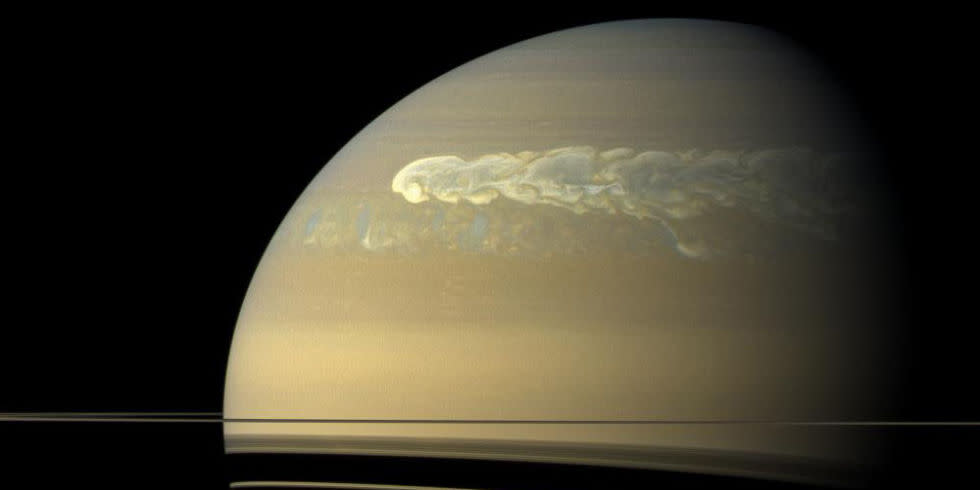Cassini Spacecraft Successfully Dives Between Saturn and Its Rings

In the wee hours of the morning yesterday, at about 5 a.m. Eastern time, humanity explored a region of the solar system never before explored: the space between Saturn and its rings. NASA's Cassini spacecraft dove inside the rings for the first time at about 77,000 mph relative to the planet, kicking off what the science team is calling the Grand Finale of the mission. At 2:56 a.m. Eastern, the Deep Space Network Goldstone Complex in California's Mojave Desert picked up the signal from Cassini.
"No spacecraft has ever been this close to Saturn before," said Cassini Project Manager Earl Maize of JPL in a press release. "We could only rely on predictions, based on our experience with Saturn's other rings, of what we thought this gap between the rings and Saturn would be like. I am delighted to report that Cassini shot through the gap just as we planned and has come out the other side in excellent shape."

While diving in between Saturn and its rings, Cassini could not transmit any data to Earth because of the way it had its antenna oriented. The spacecraft came within 1,900 miles of Saturn's cloud tops and 200 miles of the planet's innermost ring, shooting a gap between the top of Saturn's atmosphere and its rings that is about 1,500 miles wide. The expectation, based on observations of the outer rings, was that any particles encountered by the craft would be tiny, most likely smoke particles. But the team didn't take any chances, using Cassini's wide, dish-shaped antenna (13 feet across) as a makeshift shield against any particles from the rings that could impact the craft and cause damage.
Now the spacecraft is transmitting science and engineering data from the dive back to NASA, which will give the Cassini team enough info to plan the second dive, slated for May 2. The craft was able to capture a few close images of Saturn's surface during its first dive, but the team will be able to take more calculated risks in the upcoming dives and capture amazing observations of the planet's surface and inner rings the likes of which we have never seen before. A total of 22 dives are planned, about one a week until September 15, when the spacecraft will be intentionally impacted into Saturn to end the mission.
Launched almost two decades ago, Cassini will have orbited Saturn for more than 13 years by the time the mission ends in September. The 5,500-pound craft has sent back a wealth of information about Saturn and its moons, from water geysers erupting on Enceladus to the incredible hydrocarbon lakes on Titan. It may be nearing its end, but the Cassini spacecraft isn't done yet.
Source: JPL
You Might Also Like

